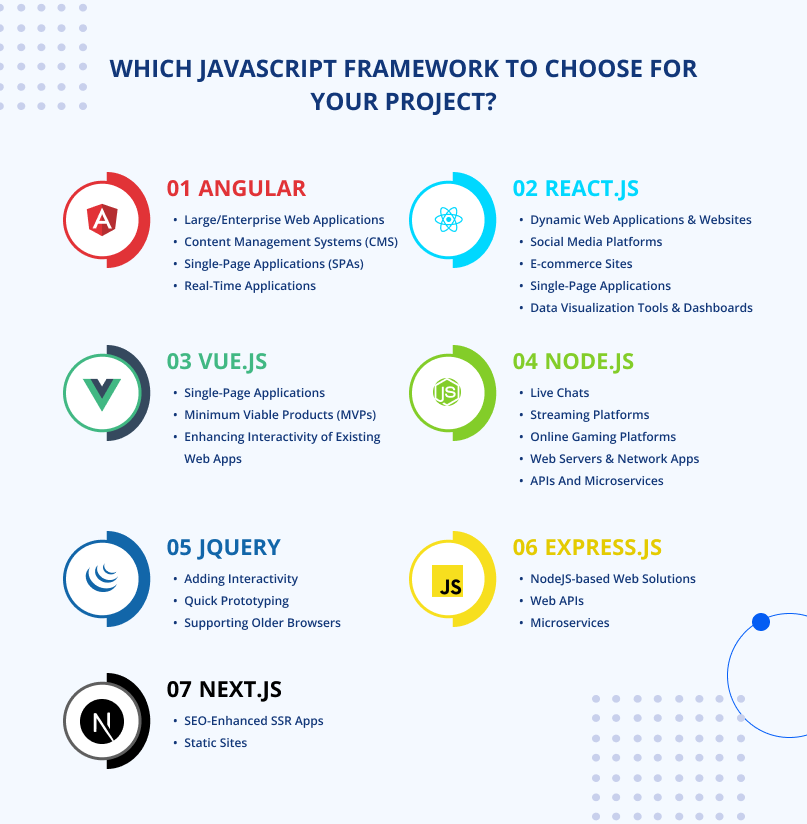CGKY News Hub
Your go-to source for the latest insights and trends.
Framework Face-off: Pick Your JavaScript Champion
Discover the ultimate showdown of JavaScript frameworks! Uncover which one reigns supreme and find your perfect coding ally today!
Battle of the Frameworks: React vs. Angular vs. Vue
React, developed by Facebook, has gained immense popularity due to its component-based architecture and flexibility. It employs a virtual DOM, which enhances performance by minimizing direct manipulation of the actual DOM. This aspect makes React ideal for building high-performance user interfaces. Developers also appreciate the extensive ecosystem of libraries and tools available for React, such as React Router for routing and Redux for state management. Moreover, React's strong community support ensures that developers can easily find solutions to common problems.
On the other hand, Angular, developed by Google, is a full-fledged framework that offers a comprehensive suite of tools for building robust applications. It utilizes a two-way data binding feature, which simplifies the synchronization between the model and the view, making it easier for developers to create dynamic content. Angular also comes with built-in solutions for routing, state management, and form validation, which can accelerate development. For an in-depth comparison of these frameworks, consider visiting Telerik's analysis. Finally, Vue offers a blend of features from both React and Angular, providing an approachable, versatile, and performant platform for building user interfaces.

Top 5 JavaScript Frameworks in 2023: Which One Should You Choose?
As we delve into the world of JavaScript frameworks in 2023, developers are met with an array of options tailored to different project needs. The top contenders include React, Vue.js, Angular, Svelte, and Next.js. Each framework presents unique features and benefits, making the decision on which one to choose a critical aspect of web development in today's fast-paced environment.
In evaluating these frameworks, consider factors such as performance, community support, and ease of use. For instance, React is often praised for its flexibility and large ecosystem, while Vue.js is celebrated for its simplicity and gentle learning curve. Alternatively, Angular provides a robust toolkit for large applications. By exploring these frameworks, you can make an informed choice that aligns with your project goals and team expertise.
How to Choose the Right JavaScript Framework for Your Project
Choosing the right JavaScript framework for your project is a crucial step that can significantly impact your development process and the performance of your application. Consider project size and scope as key factors; smaller projects may benefit from lightweight frameworks such as Vue.js, while larger applications may require the robust features of frameworks like React or Angular. Additionally, evaluate the learning curve associated with each framework, as this can affect your team's productivity. Gathering insights from both community forums and social media platforms can help you make a more informed choice.
Another essential criterion in your decision-making process is the performance and scalability of the framework. Investigating the bundle sizes and speed of various frameworks will provide insight into how they handle large amounts of data. Moreover, consider the ecosystem of libraries and tools available for each framework; a thriving ecosystem can enhance your project's capabilities [source: Smashing Magazine]. Ultimately, by carefully considering your project requirements and long-term maintenance, you can select the best JavaScript framework to meet your needs.